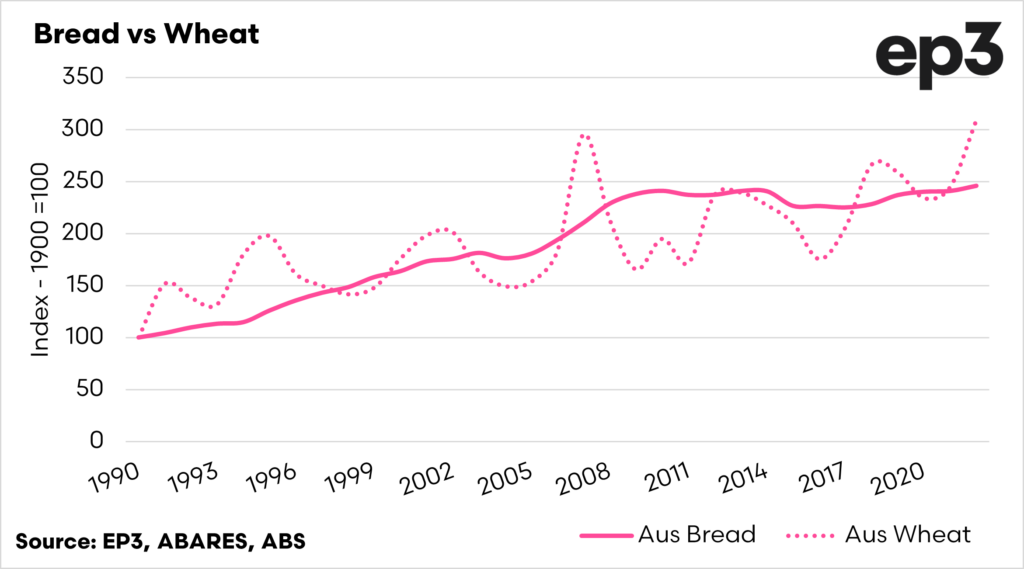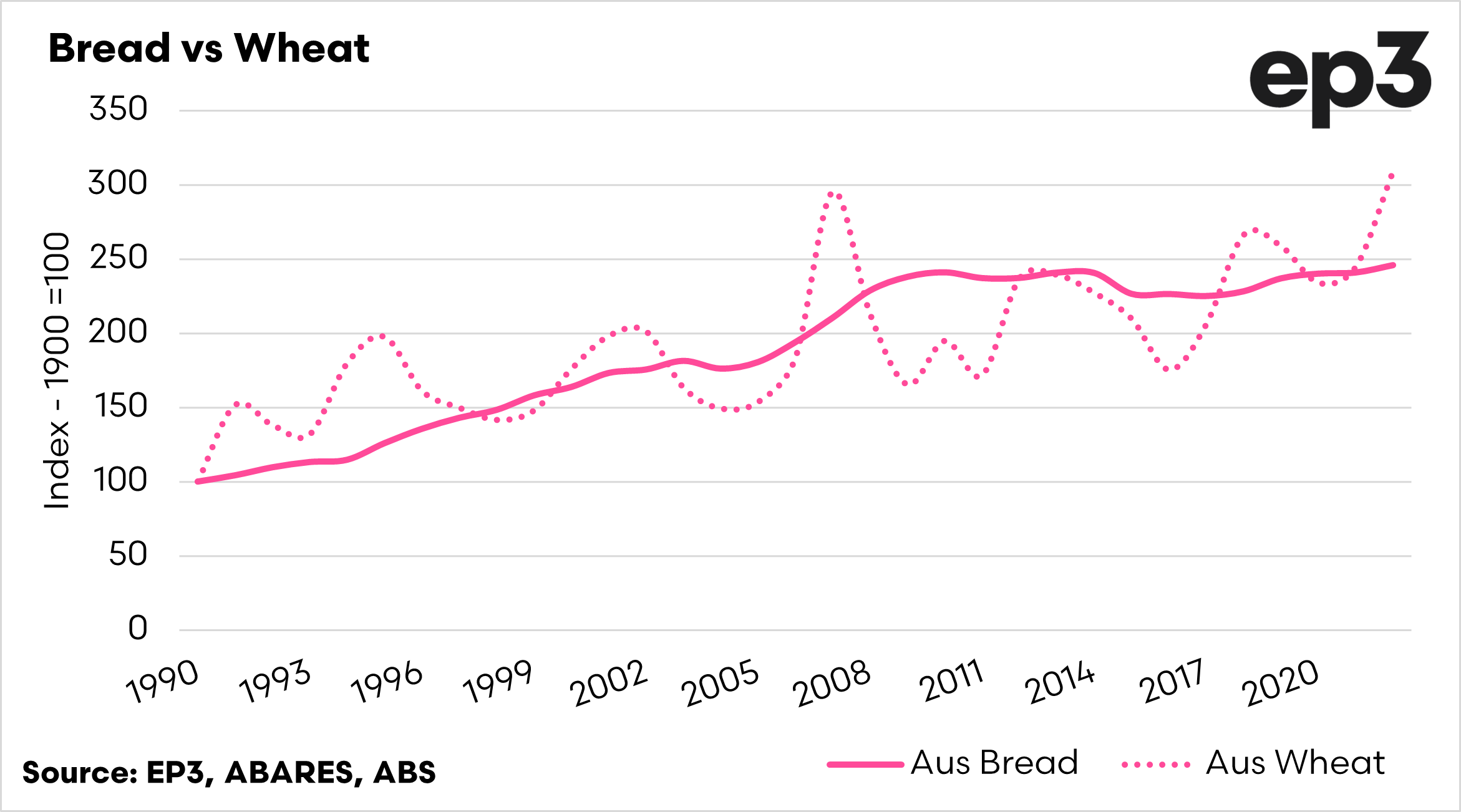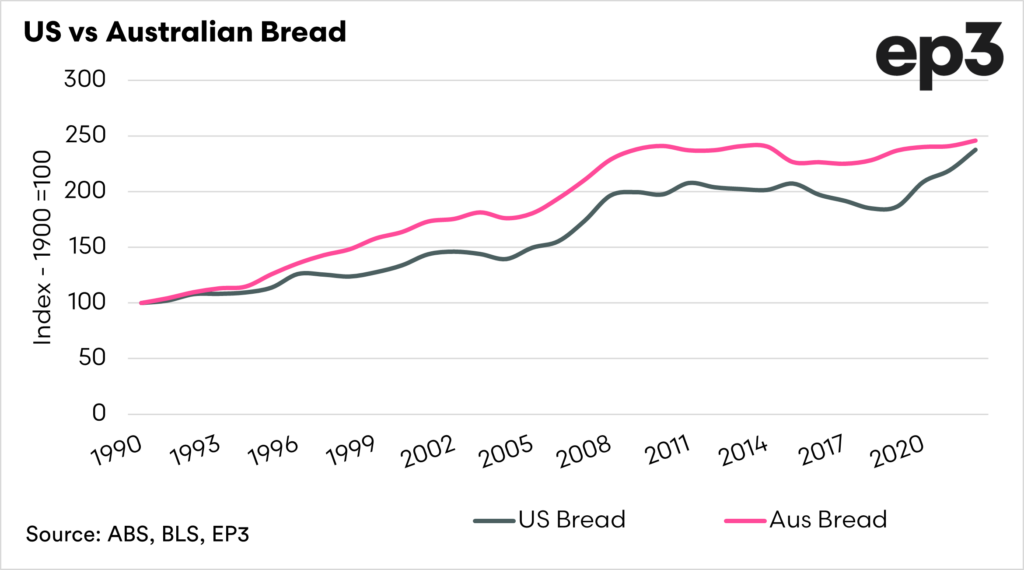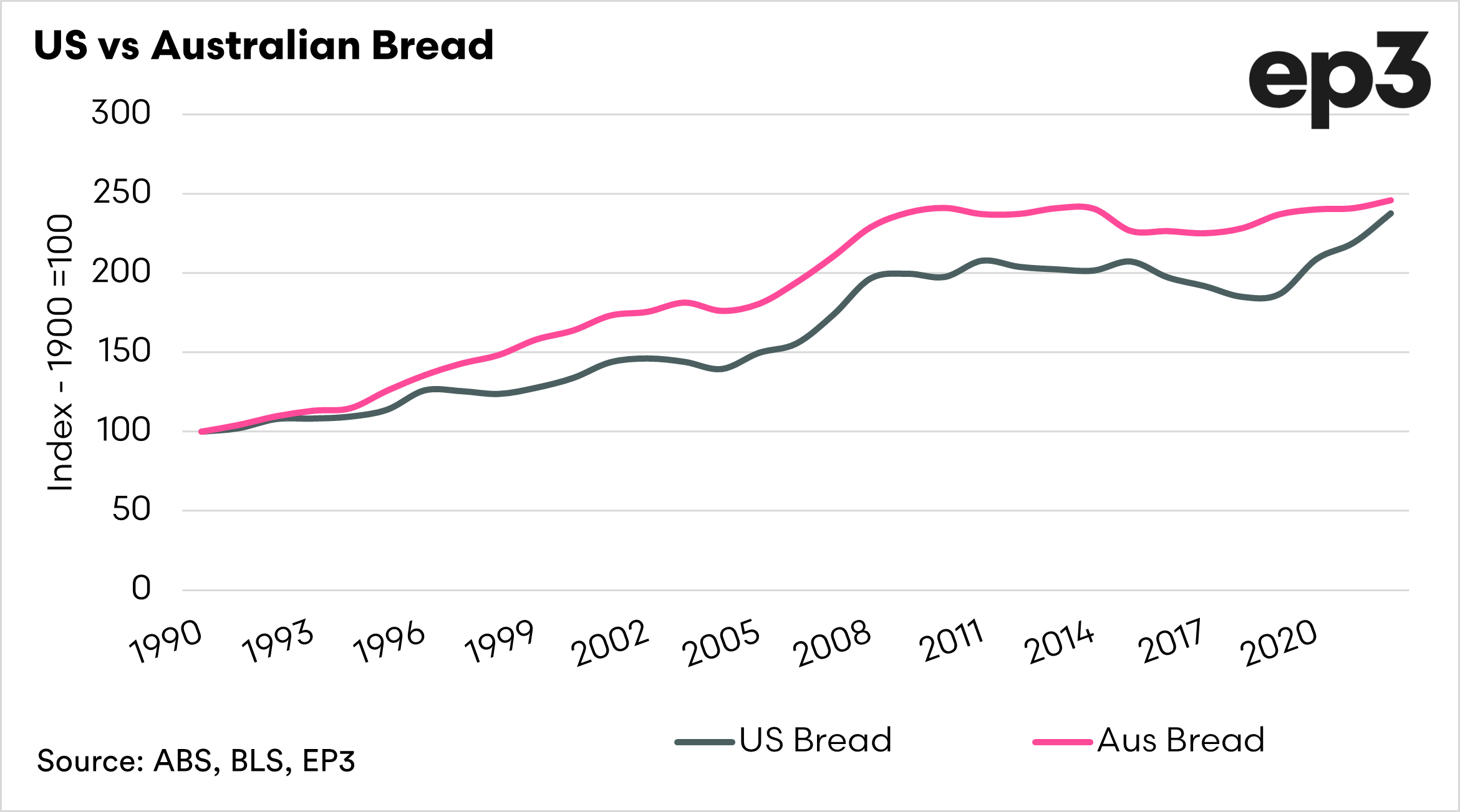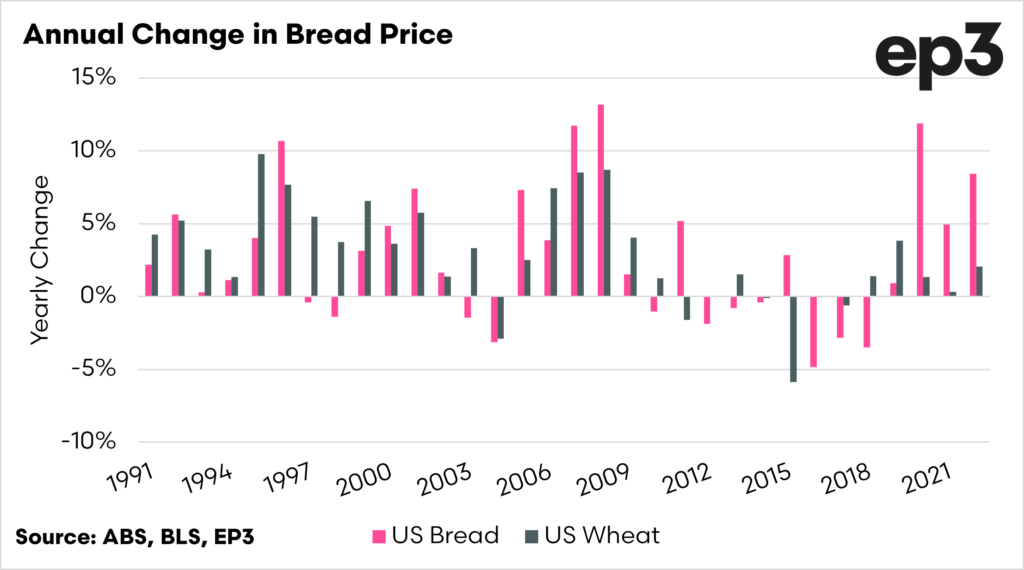Food inflation: Bread.

The Snapshot
- Bread prices are increasing.
- In Australia, the rate of increase this year has been lower than the US.
- The price of bread in the US and Australia has followed a similar trend over the past three decades.
- During times of higher wheat pricing, bread price increases higher.
- The price of bread rarely tends to drop.
The Detail
Do you know what I like about markets and agricultural commodities in particular? It is the interplay between the big-picture events (Russia, drought, policy etc.), and the impact it has on the average punter on the street. It is the connections.
One prediction that I can make with almost 100% certainty is that some of the metropolitan newspapers will run a story in early December about how Christmas is becoming unaffordable. It will go through each Christmas item and discuss how life is getting harder etc. It will probably even talk about food security in Australia.
They might even say it is gouging from farmers and that they are getting paid too much.
To an extent, it is correct, food affordability is becoming an issue for many in Australian society, but we are not food insecure as a nation.
What about our daily bread? Let’s take a look at the relationship between wheat and bread.
Bread is clearly going to have a strong relationship with wheat, after all it is made from flour, which is made from wheat.
The chart below shows an index which I have produced using data from ABARES, ABS and our own pricing data.
The bread price has generally increased over time, but not with the same volatility as wheat. This again makes sense as climatic conditions impact wheat. Bread is a consumer product, and wheat is only a proportion of the overall costs of production.
The relationship between bread and wheat pricing in America is slightly stronger than in Australia. In general, the most significant increases in bread pricing occur during times of higher annual increases in wheat pricing.
The correlation between US bread and wheat is 0.80 and between Australian bread and wheat is 0.67. The correlation has declined significantly in Australia during the past year, as bread prices have shown a number smaller rise compared to wheat.
It is important to note that price falls in bread are not as common when the wheat price falls. This is especially so in Australia.
In a 32-year period, Australian bread prices had fallen in four years versus nine times in the USA. Just like sticky dough, the bread price is sticky.
Price stickiness is an economic term where prices have an aversion to downward change when there are changes to the cost of the inputs.
Interestingly, let’s compare the price of bread in Australia to the USA. We can see that they have followed quite close patterns.
US bread has been cheaper relative to Australian bread for most of the past thirty years. This makes sense if you have ever been to America and tasted their bread. In 2022 their increase in bread pricing has been much stronger than Australia, which is closing the gap.
In reality, there is a relationship between bread and wheat pricing. The consumer is going to pay more for bread, but at the same time, farmers are paying significantly higher costs for all of their inputs.
When articles come out in the metropolitan press about the high cost of bread, I don’t it is a high enough price increase to warrant panic.

